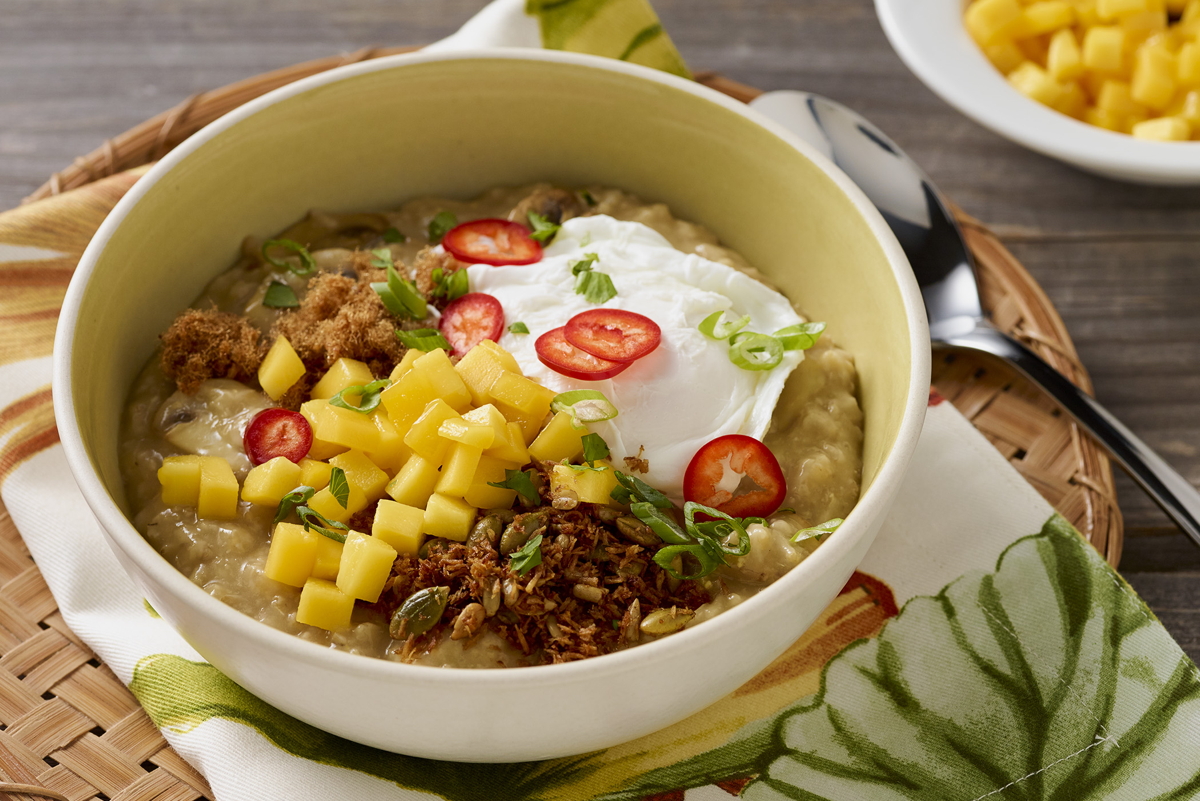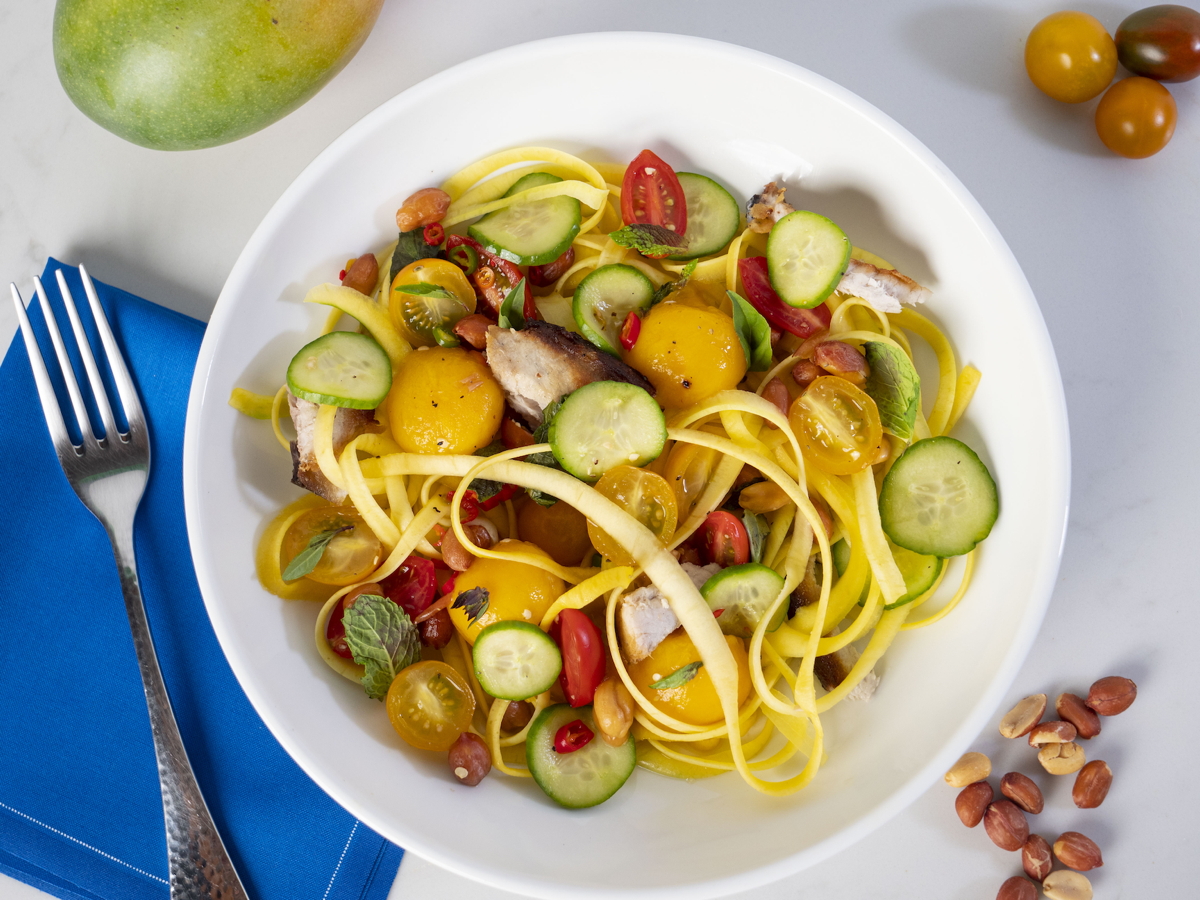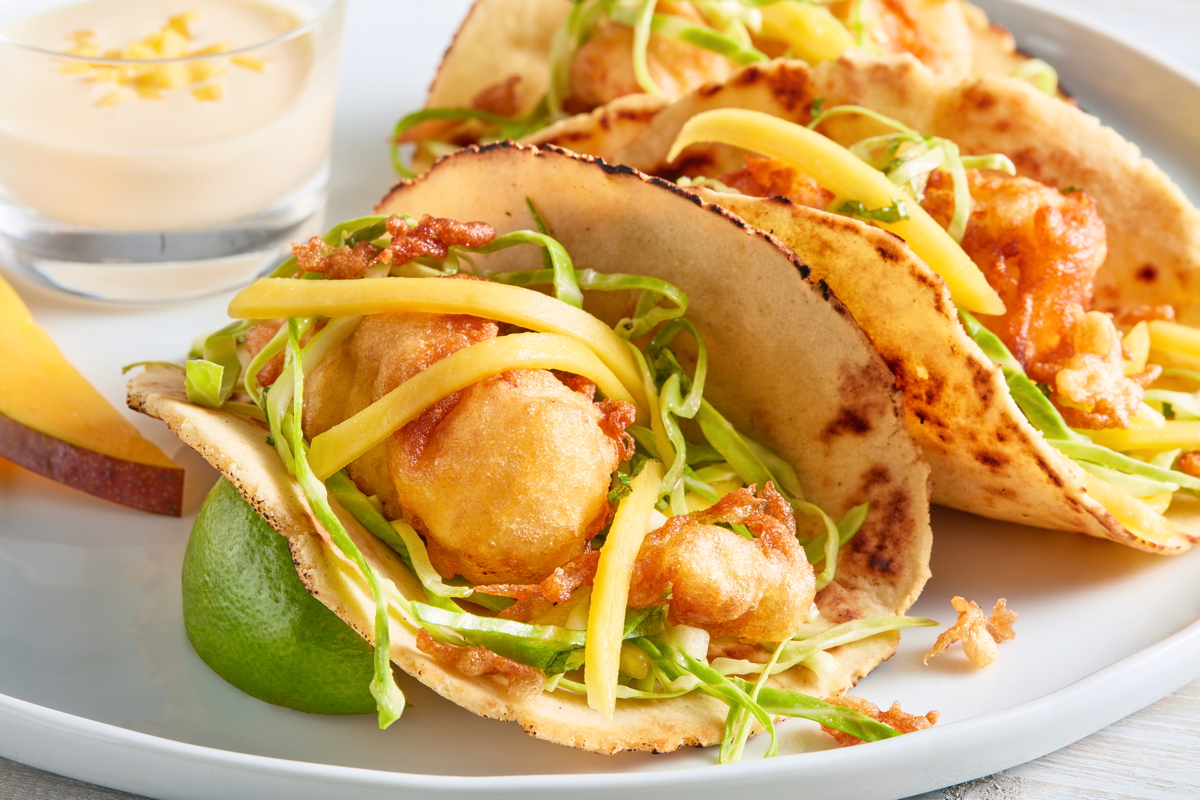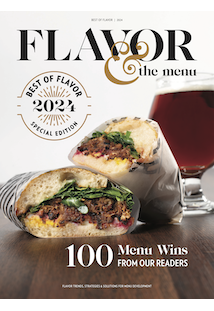
SPONSORED CONTENT
Do More with Mango
With this tropical fruit favorite in your kitchen, nothing’s off the table for flavor-forward culinary applications
SPONSORED CONTENT
Do More with Mango
With this tropical fruit favorite in your kitchen, nothing’s off the table for flavor-forward culinary applications
By Flavor & The Menu
May 31, 2024
By Flavor & The Menu
May 31, 2024
Chefs keep discovering—and rediscovering—the versatile potential of the mango, finding fresh ways to tap its sweet, succulent, tropical attributes as a hero ingredient or the perfect partner to support other components, elevating and transforming their flavors. As a longtime consulting chef with the National Mango Board, Jason Hernandez, founder of the consultancy Blade & Tine Culinary, has developed a deep appreciation for the mango’s ability to star in all manner of dishes, from expected sweet treats to savory surprises.
“Mango has become one of those fruits that U.S. consumers know and love,” says Hernandez. “But they may not know much more about using it than dicing it into a salsa or puréeing it for a smoothie.” And while many foodservice chefs are helping to raise its profile by pushing past expectations with inventive menu applications, the full spectrum of culinary possibilities with mango remains largely uncharted.
SET THE STAGE
Some opportunities for exploration come from developing a deeper understanding of how the fruit’s five ripeness stages can affect its flavor and texture characteristics. “Say you receive a mixed case of mango at different ripeness stages. It’s a real advantage to be ready with multiple menu applications that give you some spontaneity so you can use mango to its best effects,” says Hernandez.
In its early ripeness stages, a mango has a crunchy, crisp texture and the flavor ranges from sour and tart to slightly sweet. “This is a good stage to pickle mango, creating dill- or bread-and-butter-style accompaniments using different herbs and vinegars. Mangos grow in tropical climates throughout the world, so think about a Moroccan spice-sesame pickle or pick up flavors from Asia. A traditional Korean bibimbap features a quick cucumber pickle, but try it with a mango pickle instead. Consider the ubiquitous pickled onions in a burrito bowl and consider swapping them for pickled mango.” Hernandez also suggests spiralizing a mango in the early stages of ripeness, making it the centerpiece of a cold noodle salad.

This Spicy Green Mango Noodle Salad with Smoked Fish & Thai Flavors puts spiralized mango in the spotlight.
In the middle ripeness stage (breaking), the mango’s starch continues its conversion into sugars. “It’s still tart and has a slight give to the touch, but it’s becoming sweeter and slightly juicy,” he explains. “I love to cook with it at this point, maybe doing a long, slow braise for carnitas. I fold chopped mango into the pork and the fruit tenderizes as it cooks, adding tart and sweet juices to the meat. After hours of braising, you shred the pork and find small pieces of mango within.”
When mango is more fully ripe, its sweetness is a welcome presence in spicy dishes, balancing the heat quotient, Hernandez notes. This is also the best time to add it to desserts, baked goods, sauces and dressings. It has a soft, juicy texture and a tropical aroma.
Today’s chefs also can do more to use the whole fruit, he notes. “U.S. consumers may not be used to eating its peel, but in other countries, we see it being fried for strips and chips. So, you could use fried mango peel as a swap for an onion string topper. Or add some barbecue seasoning to it and serve up an alternative to barbecue potato chips.” There are many other suggestions for the eco-conscious kitchen that is focused on reducing waste. “Pieces of the flesh around the seed can be added into infused waters or braises. “You could drop the whole seed, with whatever flesh surrounds it into a mole,” says Hernandez. “The seed itself won’t disintegrate while cooking, making it easy to remove after.”

In these Mango Halibut Tacos, developed by Chef John Baez on behalf of the National Mango Board for Kitchen Collaborative, mango’s versatility is showcased in a stunning number of ways: The halibut is battered in a mixture of beer and mango purée. It’s topped by a mango-pineapple slaw dressed with a mango-lime vinaigrette and tucked into corn tortillas infused with fresh mango blended into a purée. A mango-ginger aioli is drizzled over top.
MIX THINGS UP WITH MANGO
From deep-fried pickled green mango spears to mango-braised meat tucked into a bao bun to an Aloha Mango Pizza that sees mango standing in for pineapple on a pizza, Hernandez is not exaggerating when he insists that nothing’s off the table when it comes to adding mango to the menu. Here, he offers more of his favorite flavor-forward inspirations:
- At the Flavor Experience later this summer, the National Mango Board will be featuring a Korean Fried Chicken Sandwich with a gochujang mango sauce and pickled mango.
- Consider building a mole with mango. Its sweetness makes for a perfect counterpoint to the bitter dark chocolate.” “Mango is really able to stand out against that chocolate,” he says.
- Name a spice, herb or other seasoning and Hernandez will confirm that it’s an excellent flavor fit with mango. “Choose from all over the world. Mediterranean? Try mango with za’atar. Latin America? Any chile spice. Asia? Think Thai chiles. West Africa? Mango takes to Moroccan seasoning beautifully. Fresh herbs work great, too: rosemary, dill, oregano and thyme support mango so well.”
- Mangos are a natural in salsas, pairing well with poblano peppers, jalapeños, tomatoes, onion and garlic. But there are other veggies that make a perfect union with mango, says Hernandez. “For example, add the sweetness of mango to the smokiness of roasted or grilled Brussels sprouts.”
- Do mangos work with proteins? “Yes—all of them,” says Hernandez. “I’ve already mentioned slow braised pork with mango for carnitas. You can also try a mango chimichurri on steak. Add the fruit to fish or seafood in a taco. Roast branzino and add fresh mango pieces, veggies and feta cheese,” he suggests.
- In the dessert space, Hernandez is a big fan of mango and chocolate: brownies, pudding, mochi, cakes. Push the envelope even more. “Add a mango component to a traditional carrot cake. Try it with olive oil cakes, doughnuts, bread puddings, puff pastries, milk shakes.”
“Chefs are taking mango far from its original slice-and-dice format and really putting it out there in creative applications,” says Hernandez. Let mango take the lead!
Click here for more mango menu inspirations, product information, handling tips and to sign up for our newsletter.







